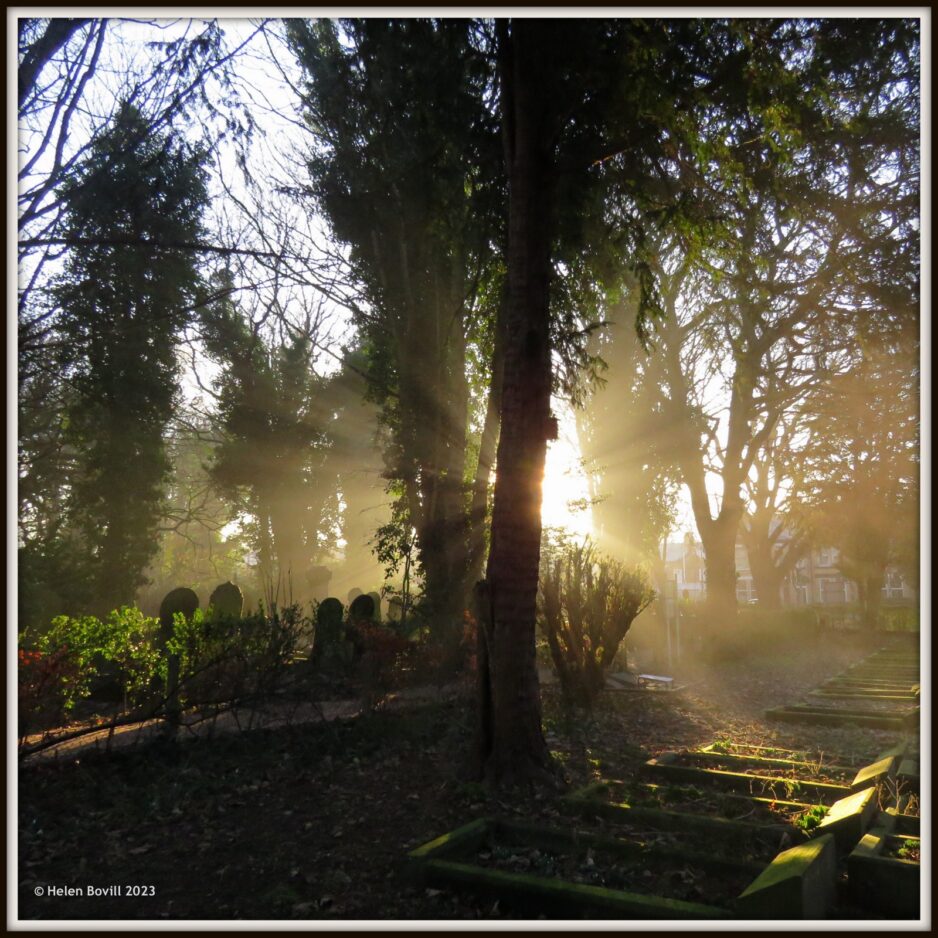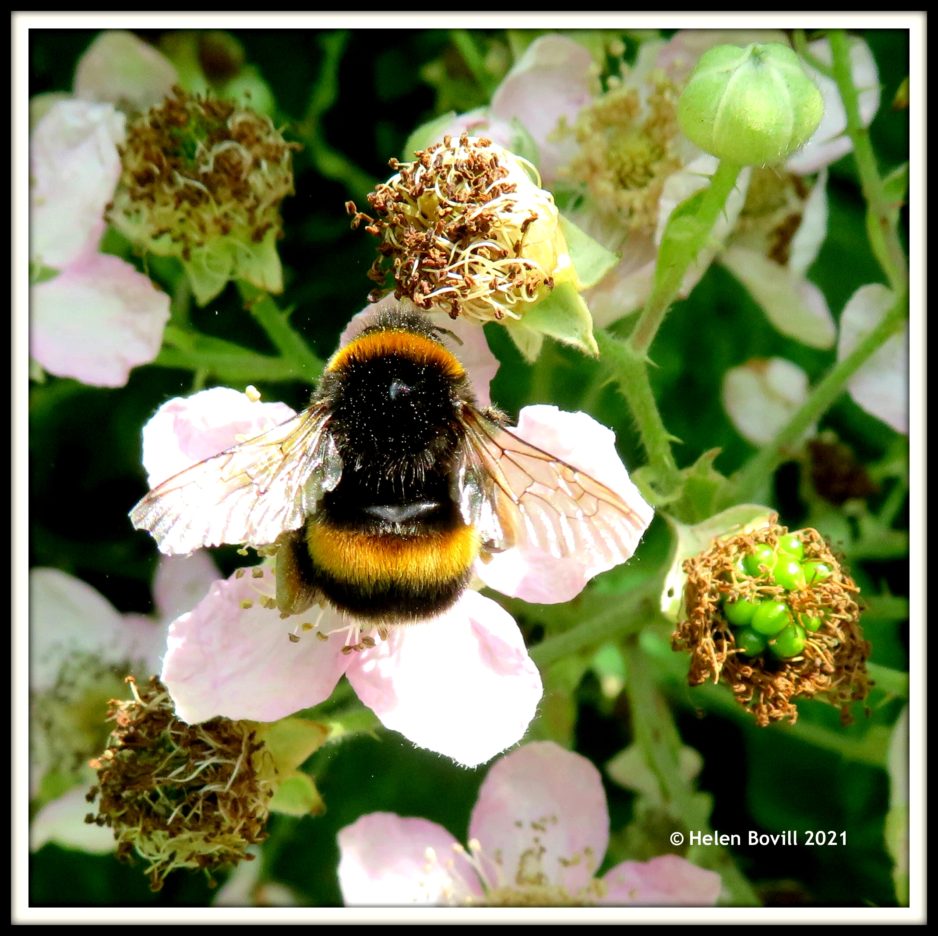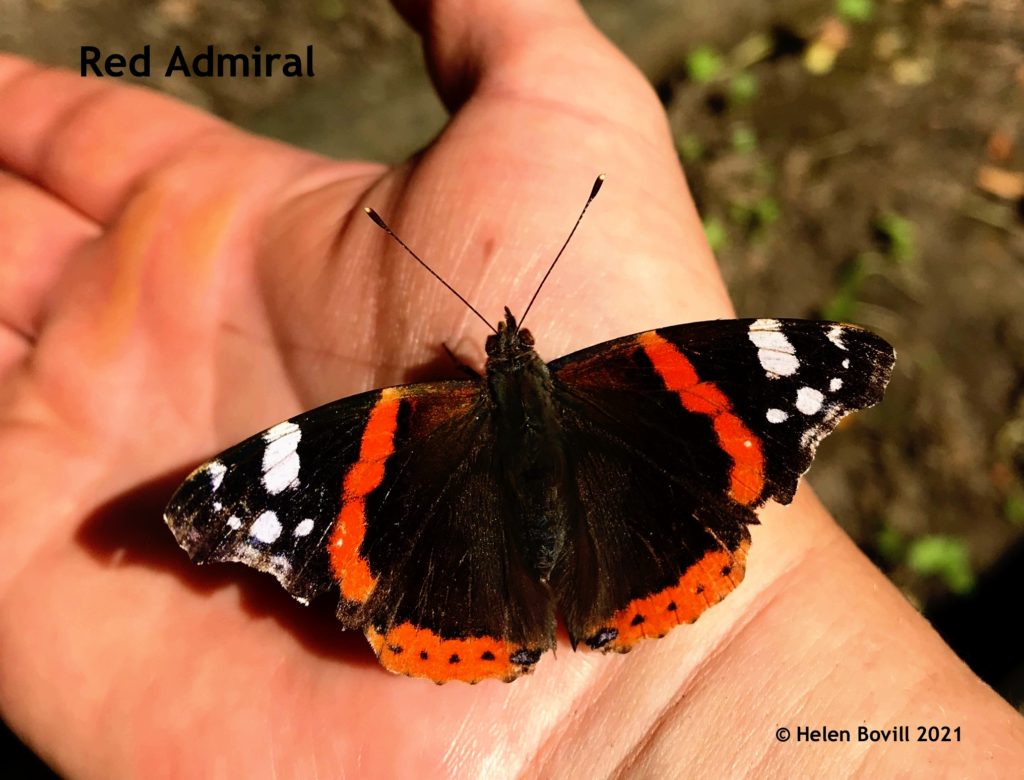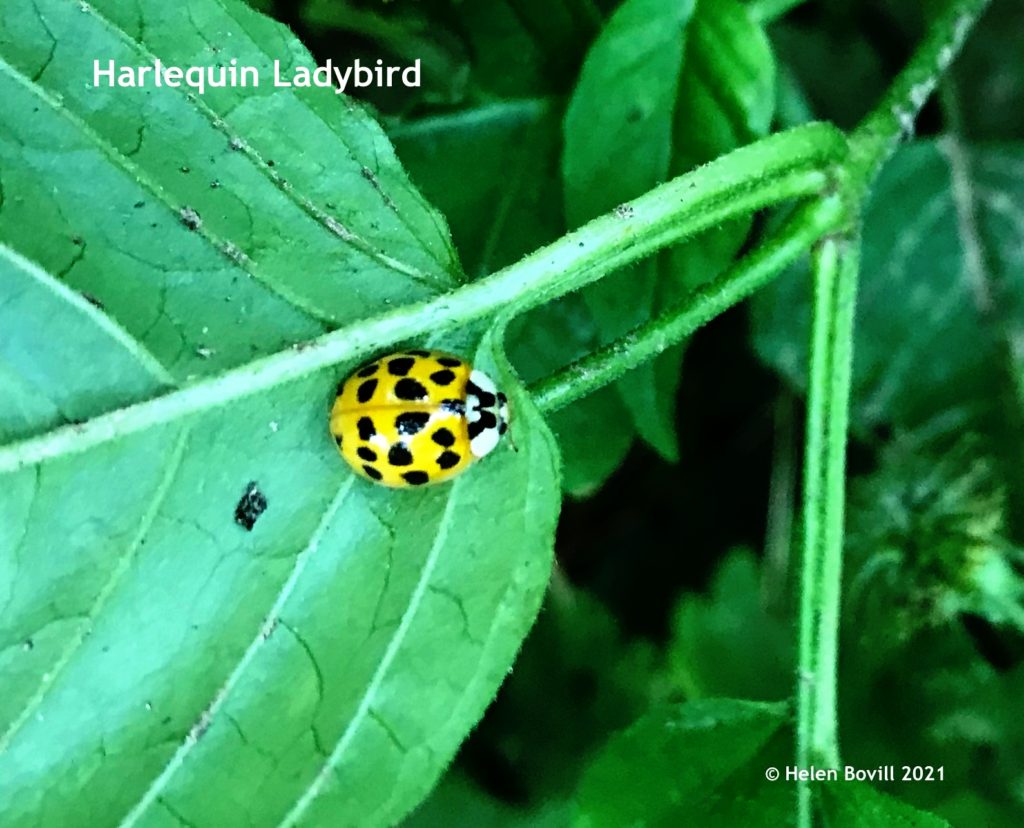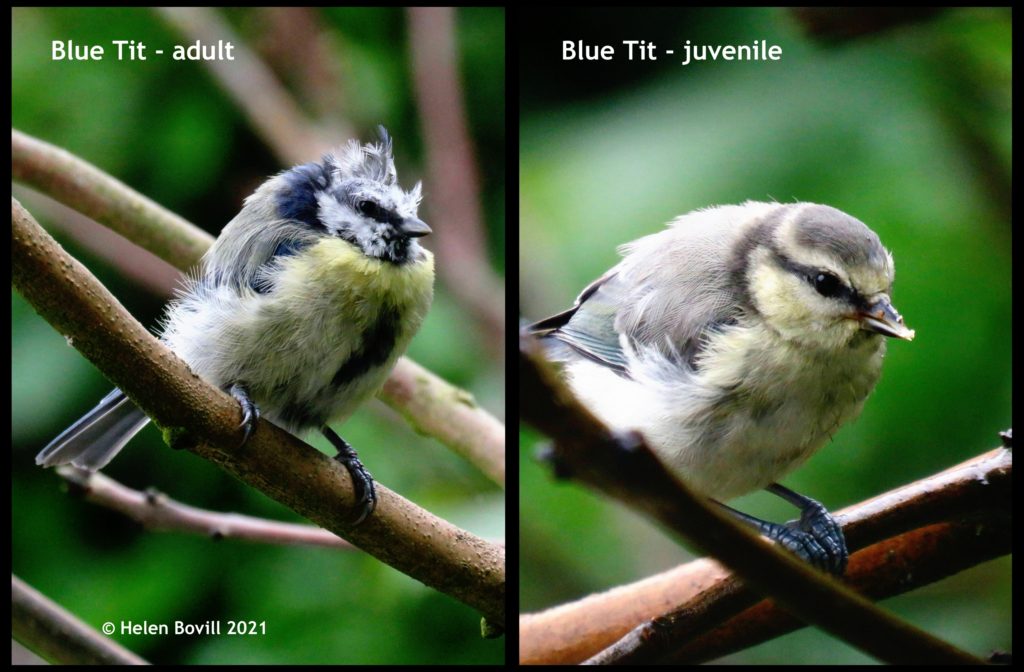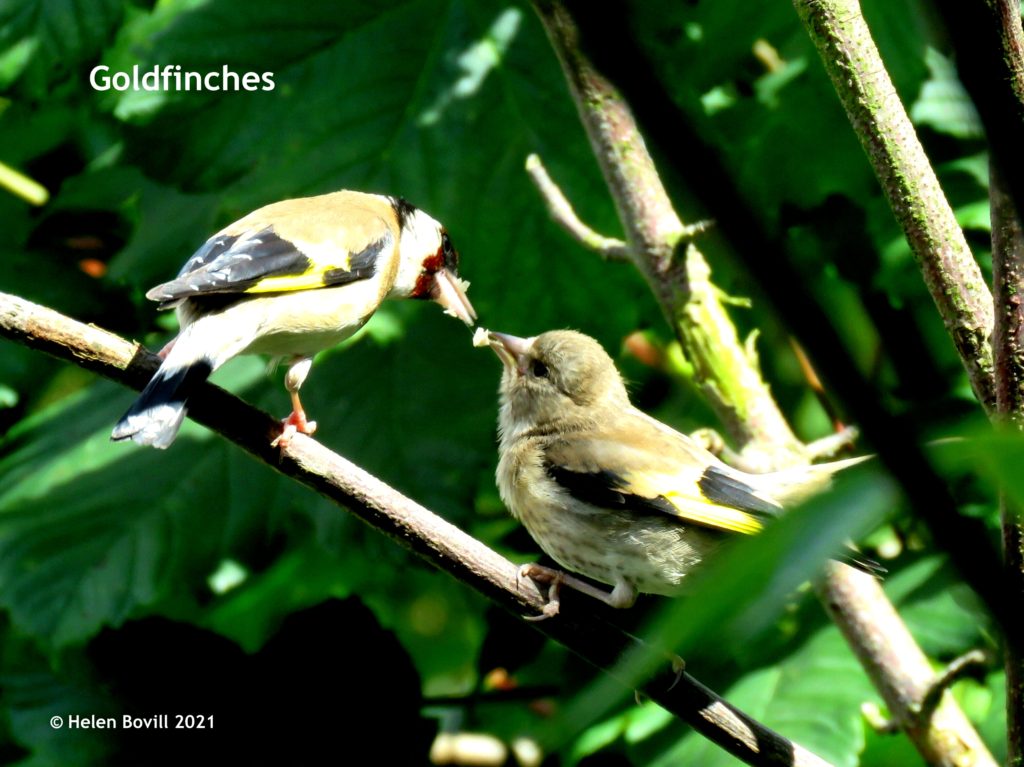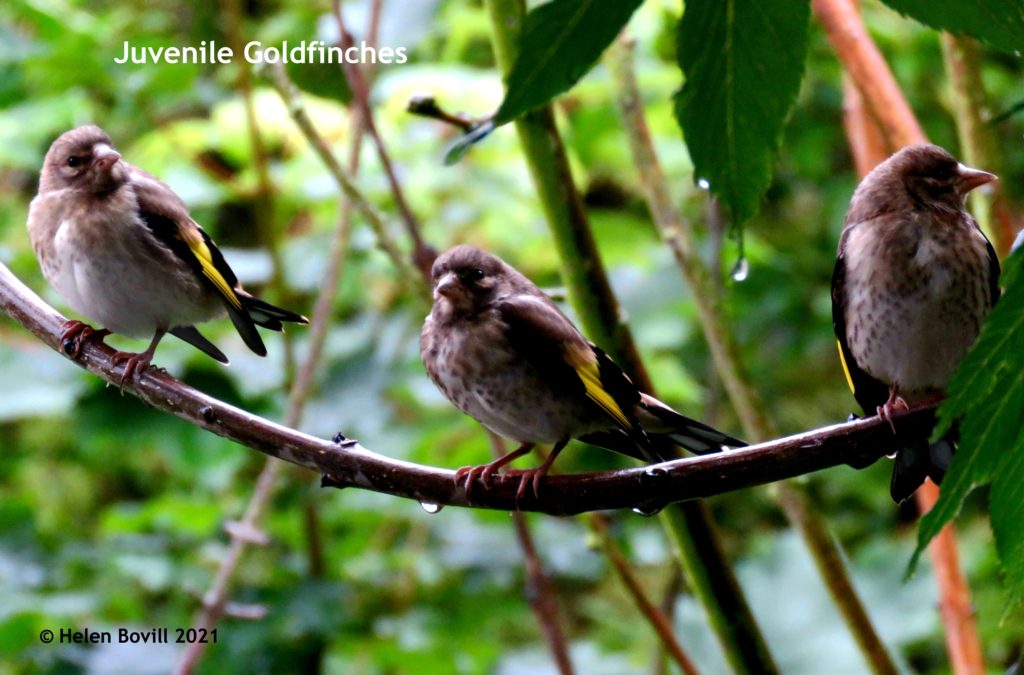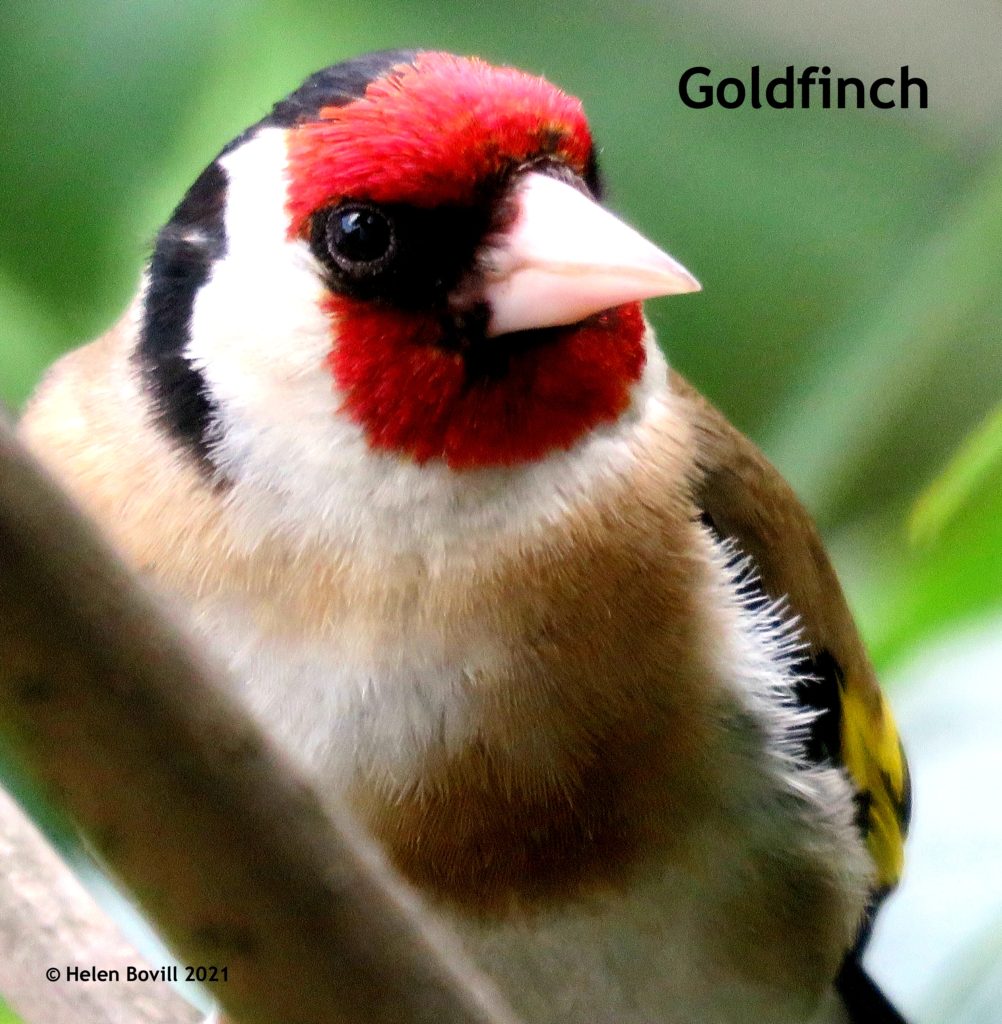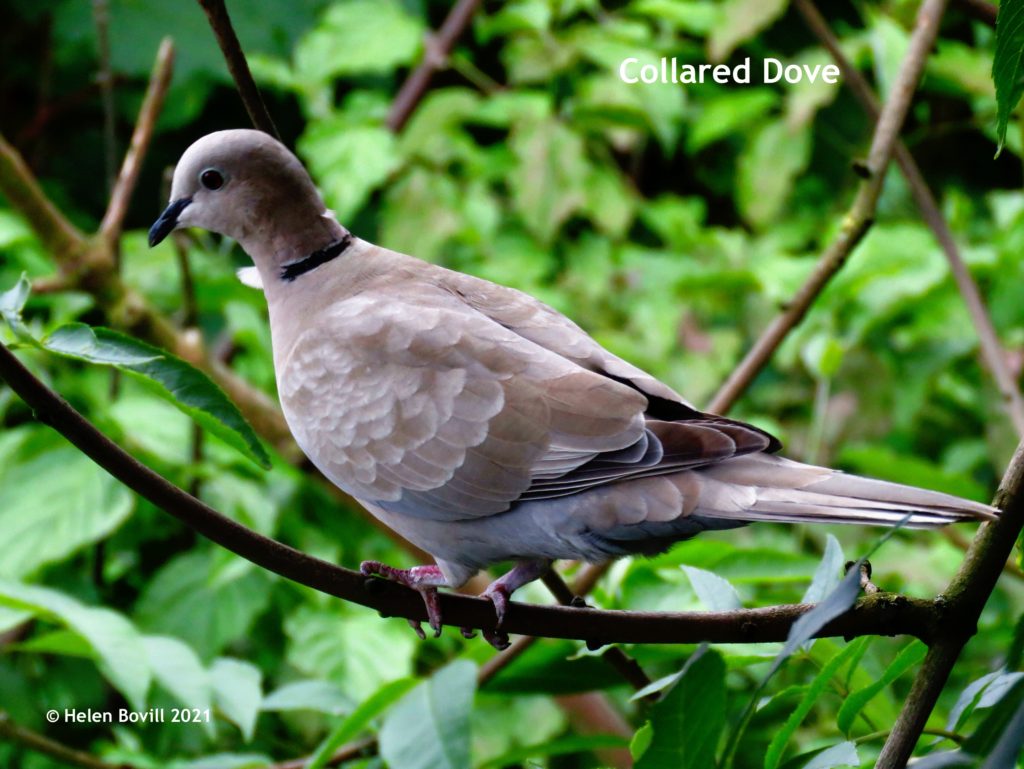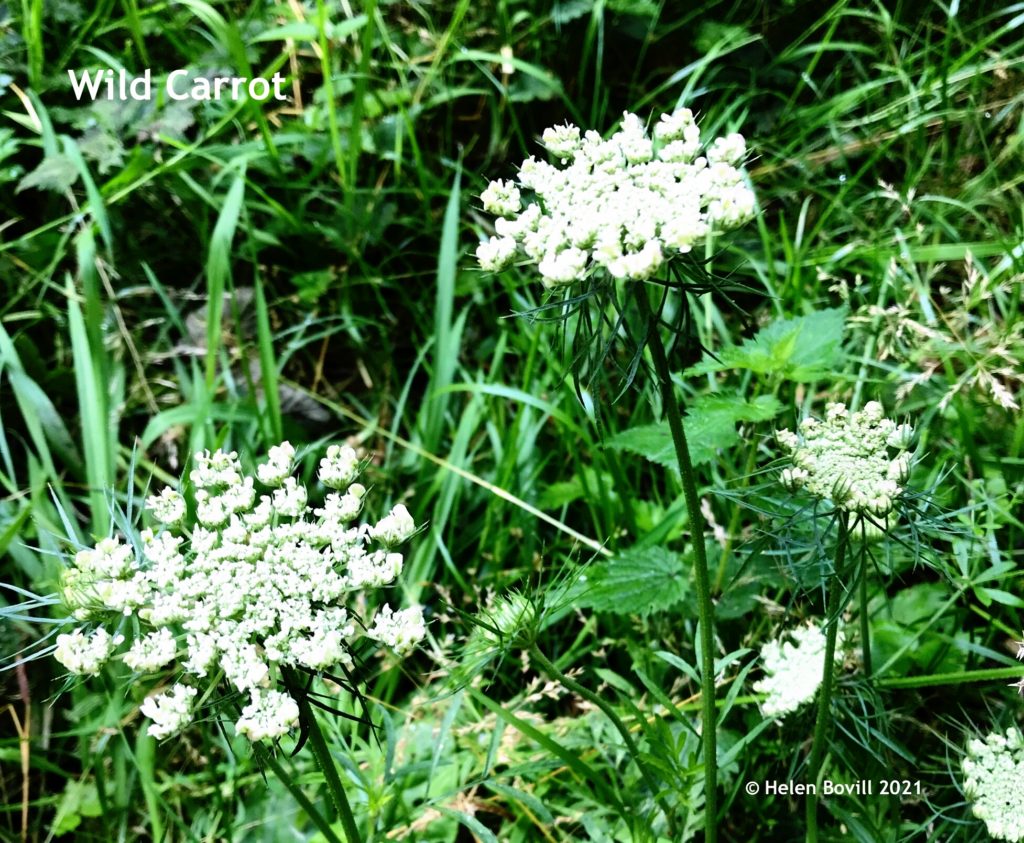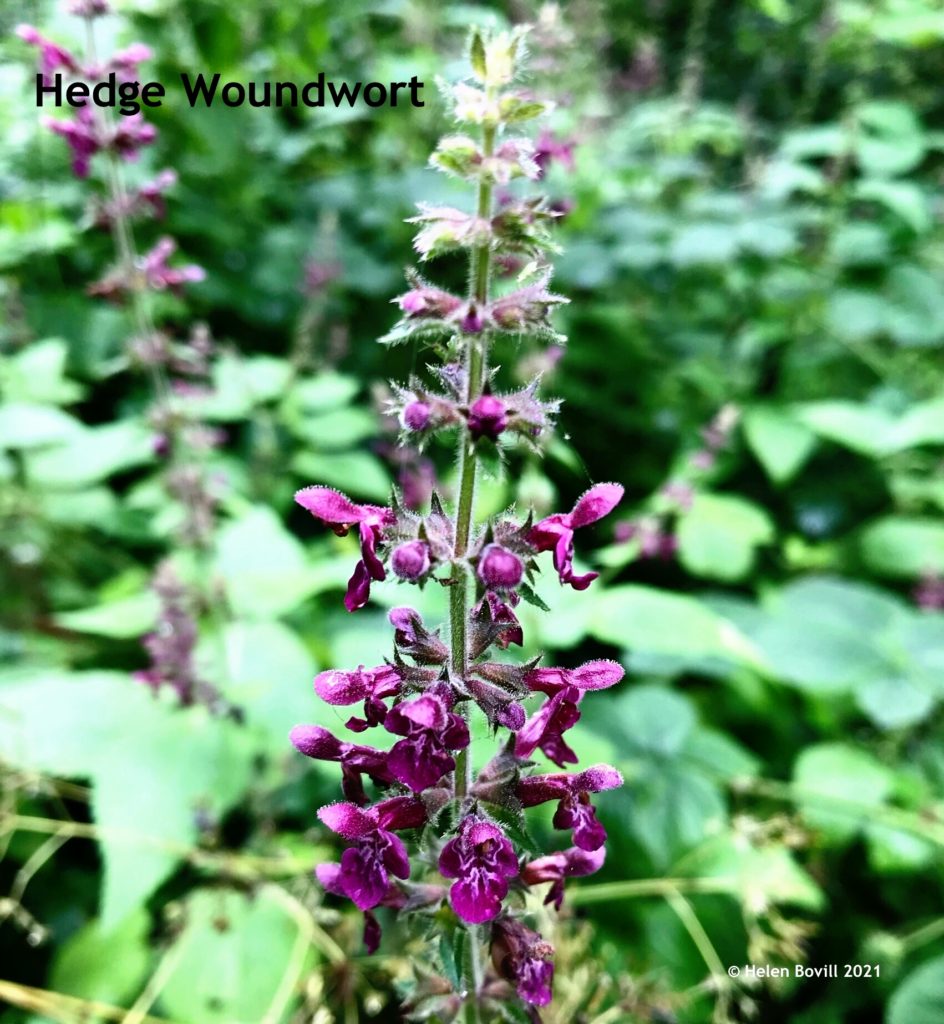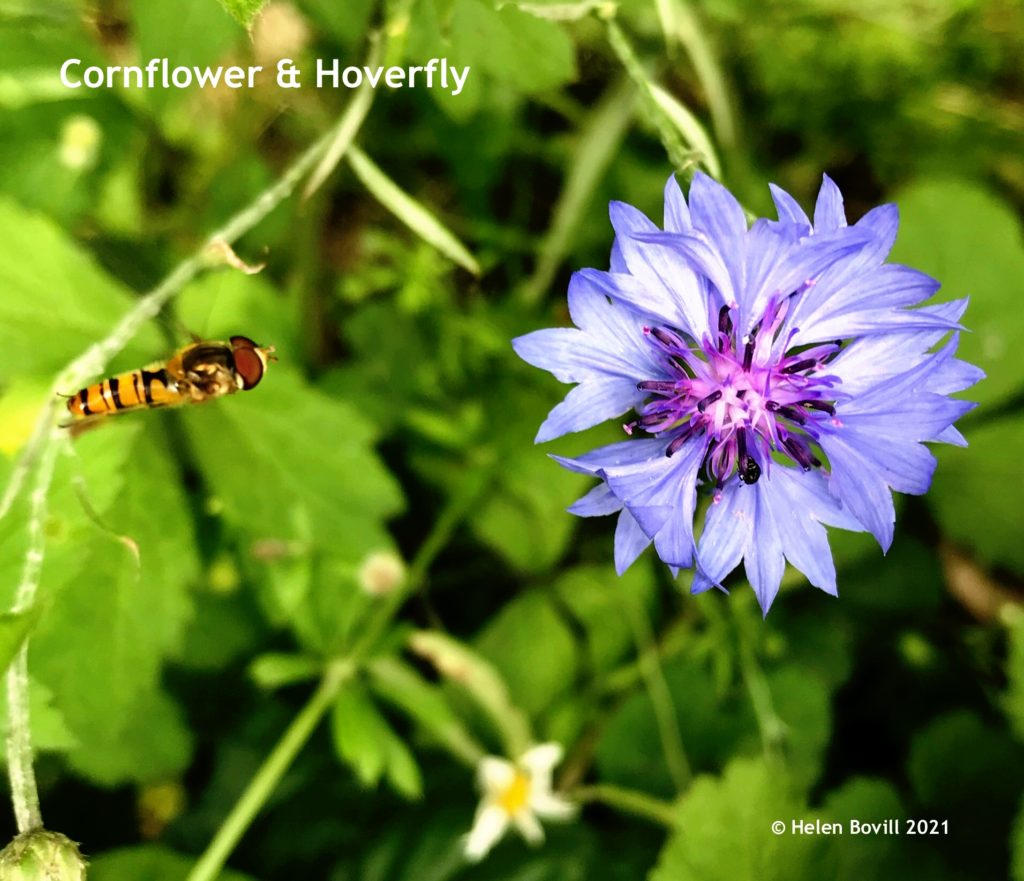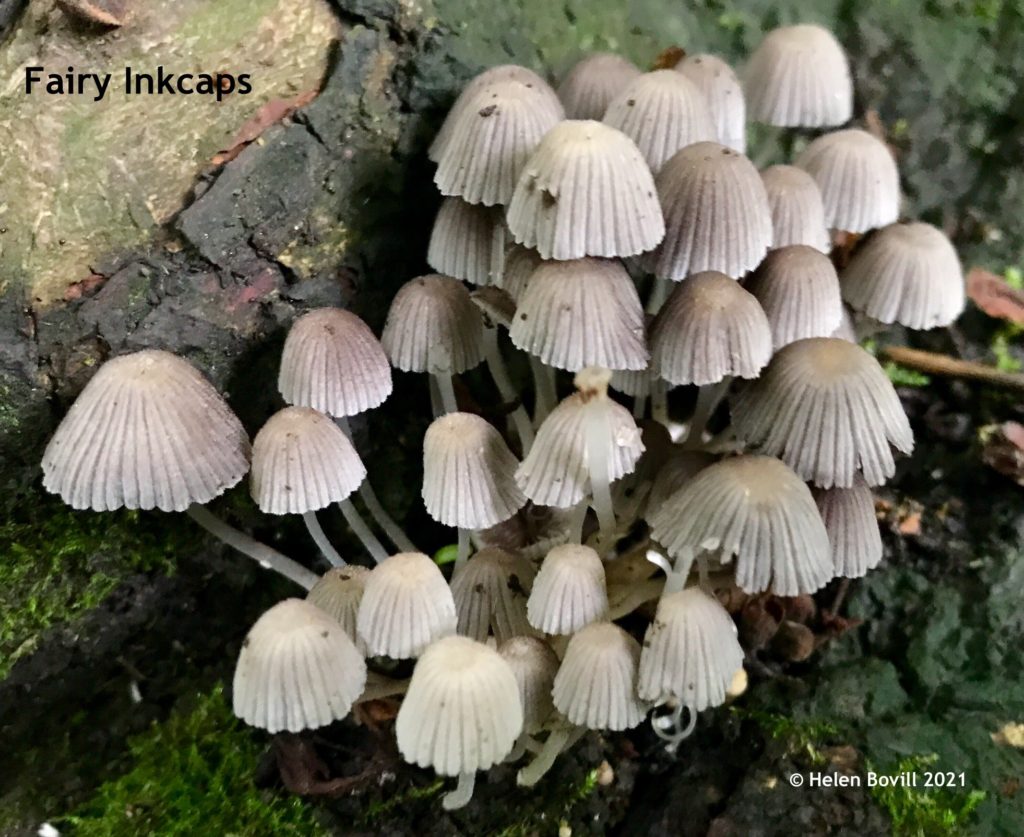This month has been a typical midwinter one, with a mix of weather including a week of sub-zero starts to the day. The temperature barely rose above freezing on those days but they were sunny and the frozen footpaths were a lot easier to walk on. Despite the cold temperatures and heavy frost everywhere there was still plenty of cemetery wildlife around.
Birds
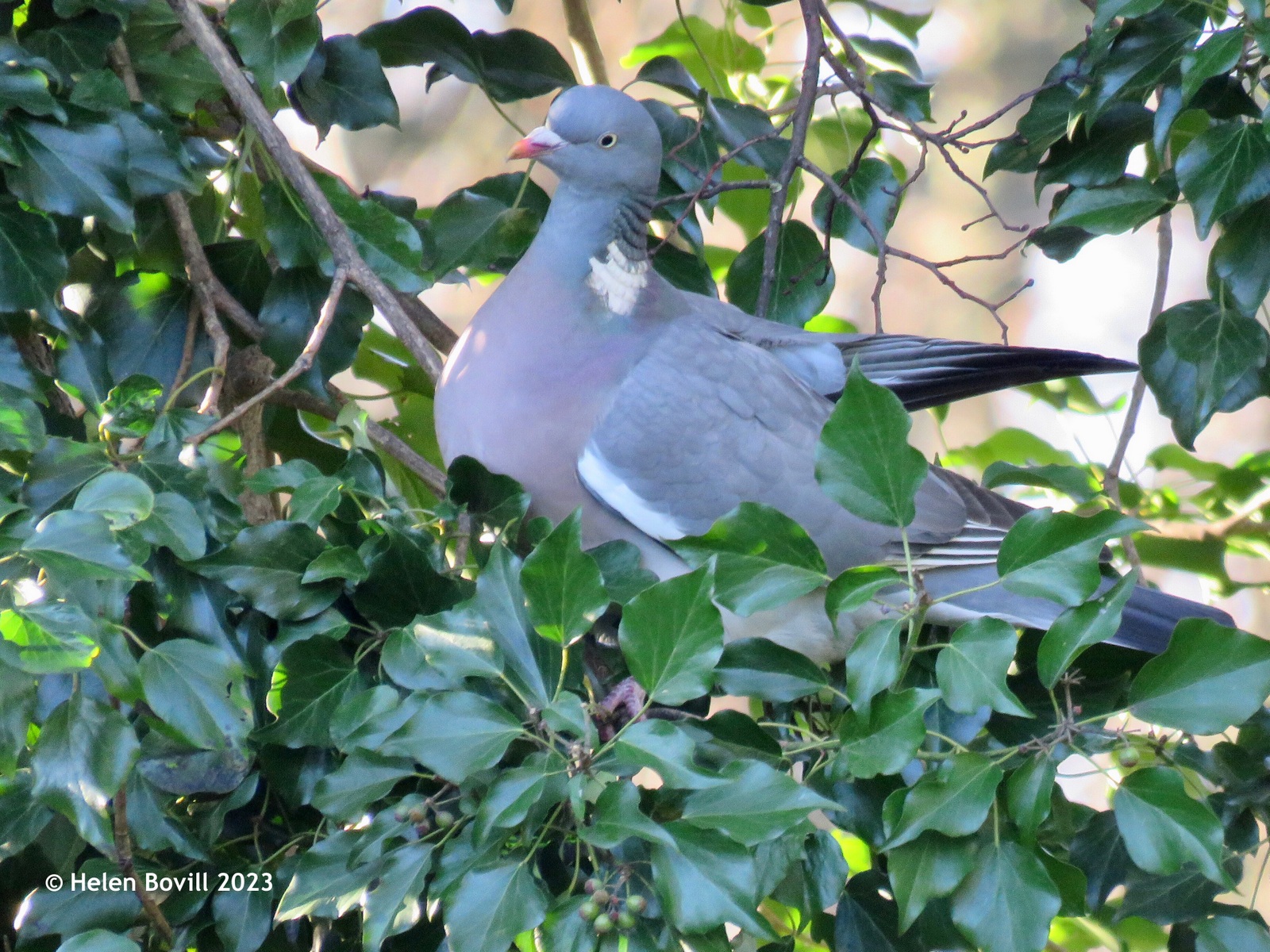
At the start of the year, I decided I’d start making a list of all the different species of bird I saw within the city boundary. I’m curious to find out how many I can see in a year. At the time of writing I’ve seen a total of 40, 16 of which were in the cemetery. The cemetery ones are Wood Pigeon, Stock Dove, Carrion Crow, Magpie, Robin, Wren, Blackbird, Blackcap, Blue Tit, Great Tit, Coal Tit, Long-tailed Tit, Chaffinch, Goldfinch, Goldcrest and Dunnock.
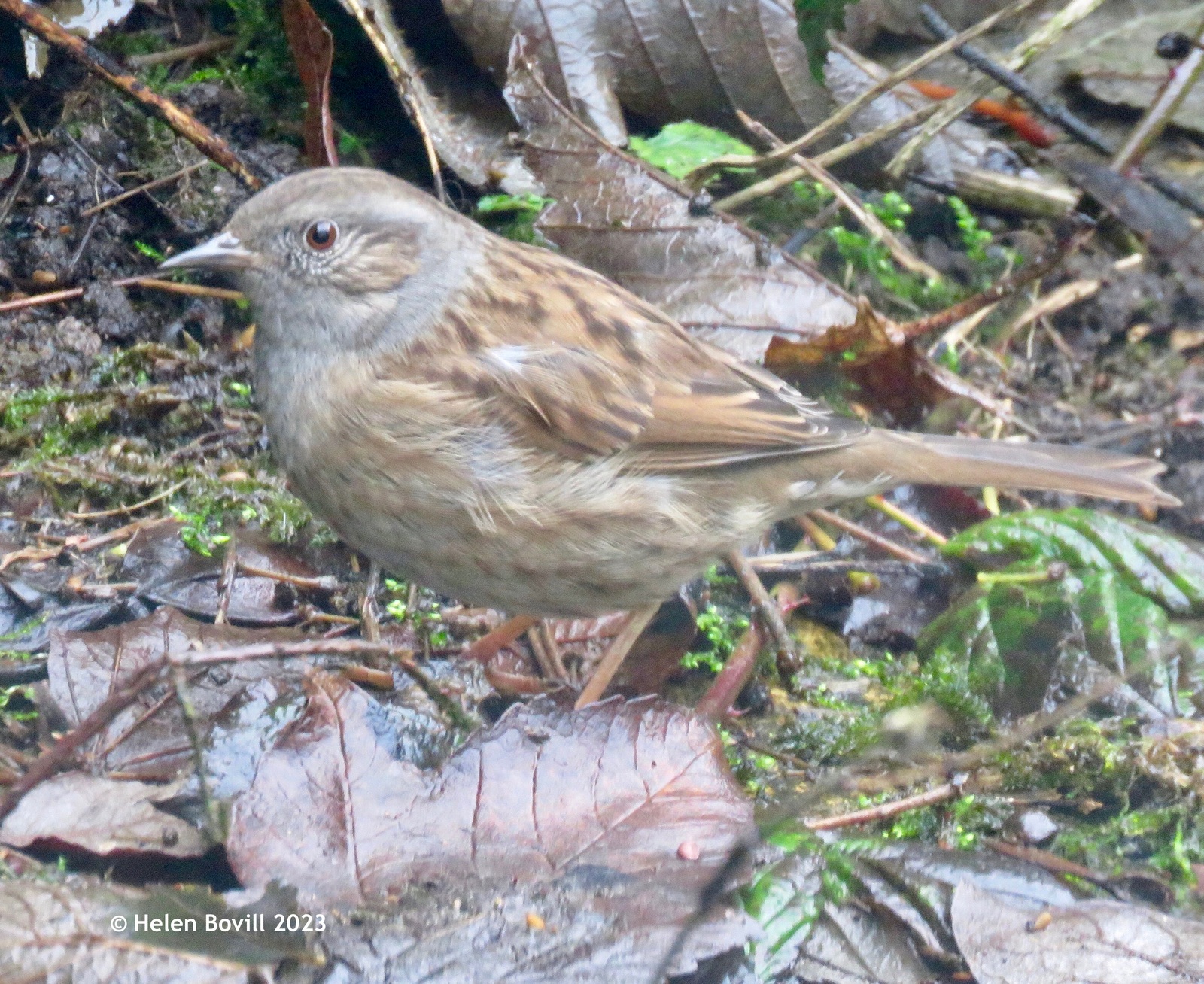
One of our volunteers also saw a Great Spotted Woodpecker and a Treecreeper, making a total of 18 bird species seen in the cemetery this year so far. I’ll add to my cemetery list any additional species I see throughout the year and publish the final results in my December 2023 report. Let’s see what rarities or unusual visitors (if any) turn up this year!
I’ve also noticed some activity around the nest boxes as the birds, especially the Tit species, start looking for nesting sites.
Plants
There are now plenty of Snowdrops flowering in clusters around the cemetery. I’ve seen two types – an elongated flower that has a single layer of petals, and a rounder one with a double layer.
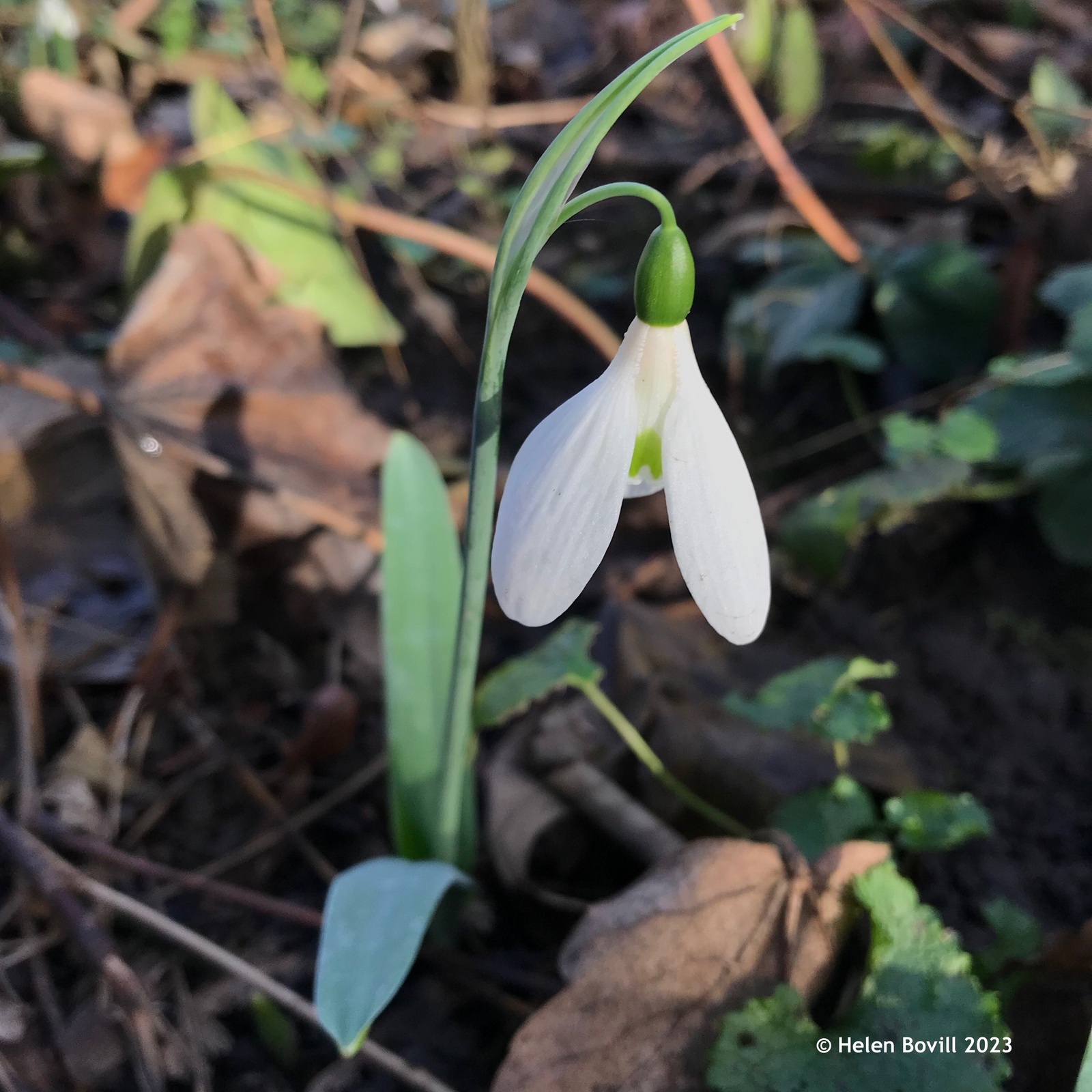
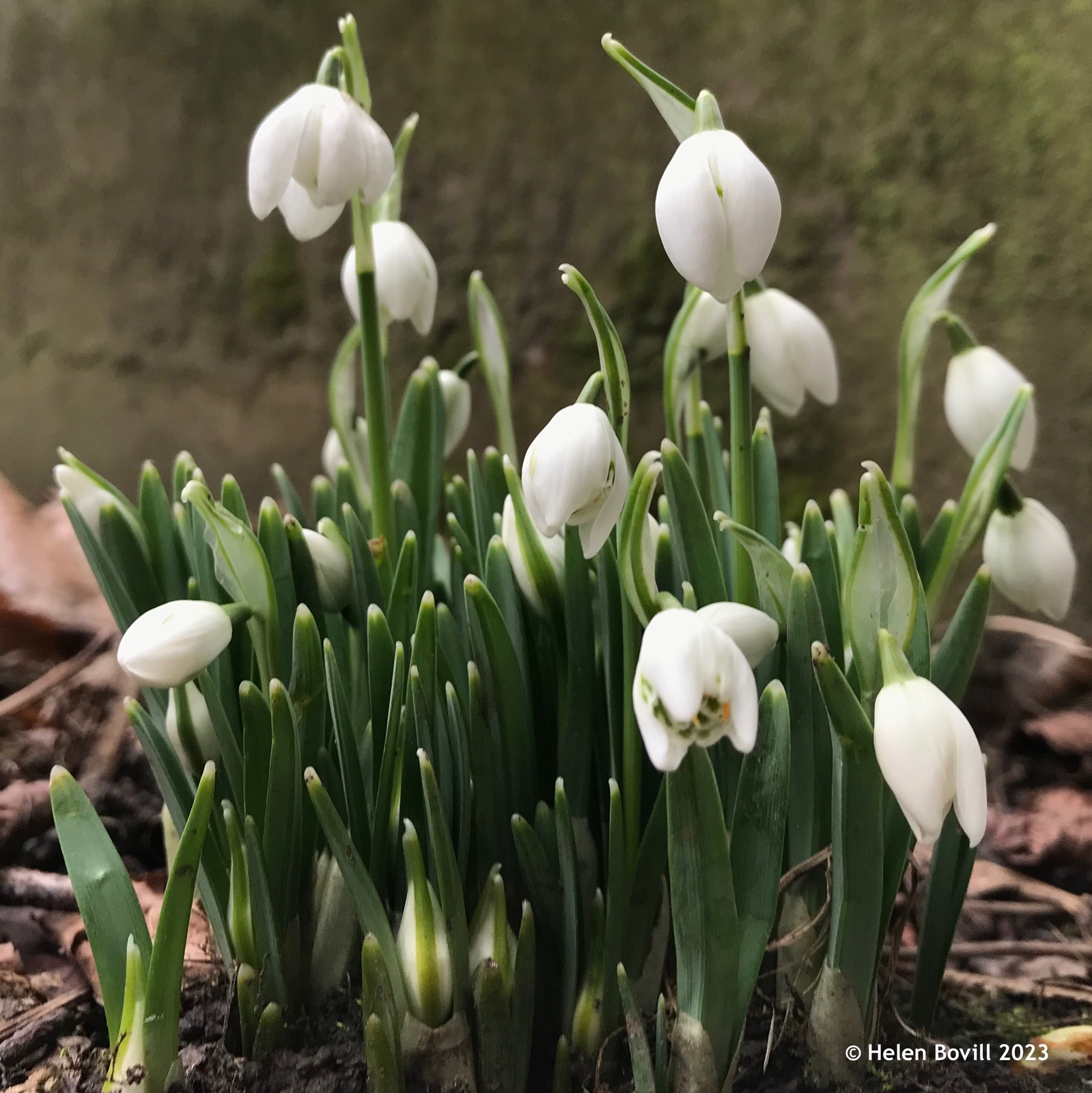
The Celandines growing in the grass verge alongside Spring Bank West have just started to flower. I saw the first bud in mid-January and they’re almost fully open now. There are only a handful to see at the moment though, and easy to miss as you walk past. The Daffodils are starting to poke the tips of their leaves up through the grass, and a few very early buds are also visible.
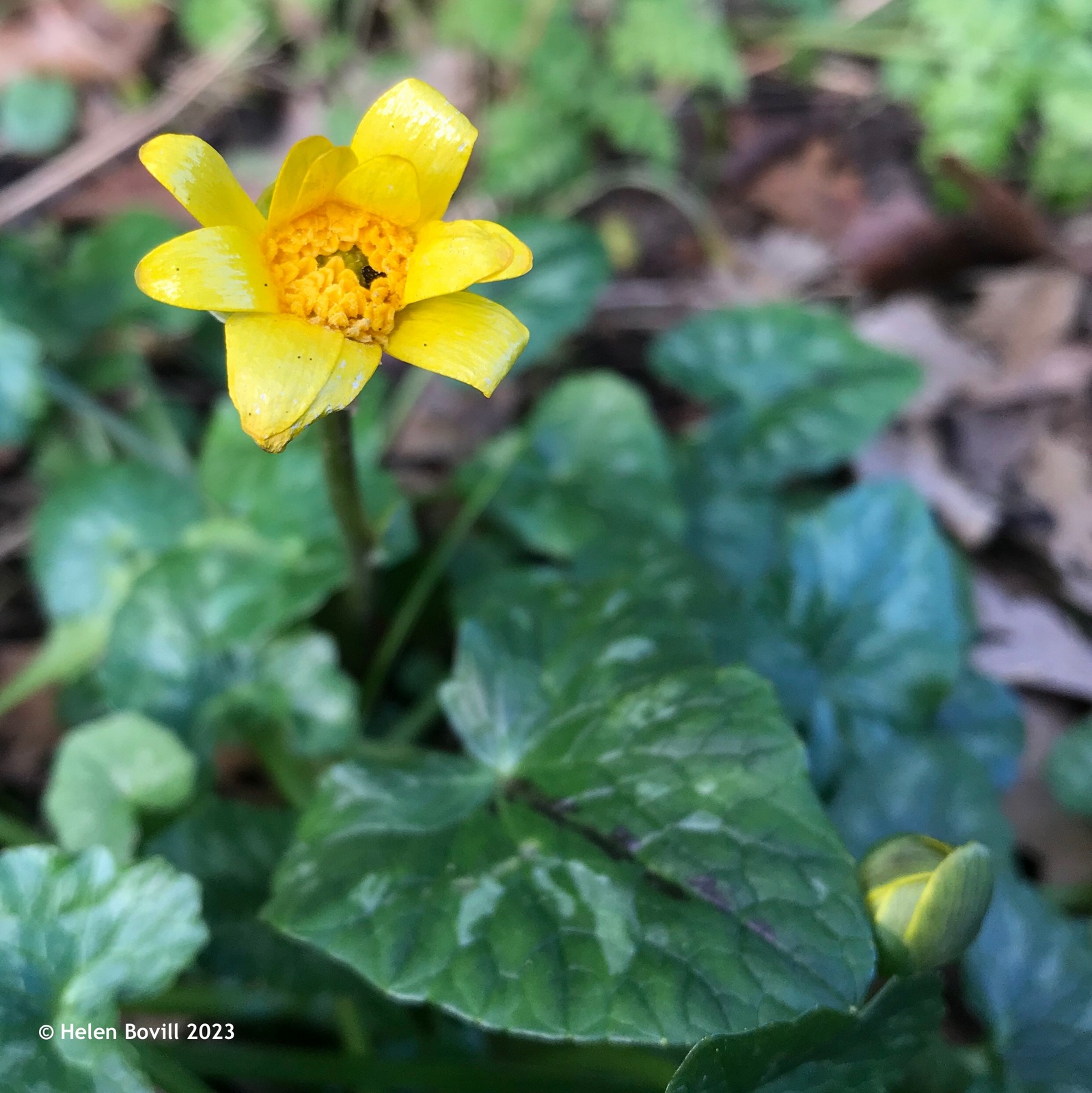
Flowers are not just found growing low near to the ground. Look up and you can also see them growing high on the trees in the form of catkins.
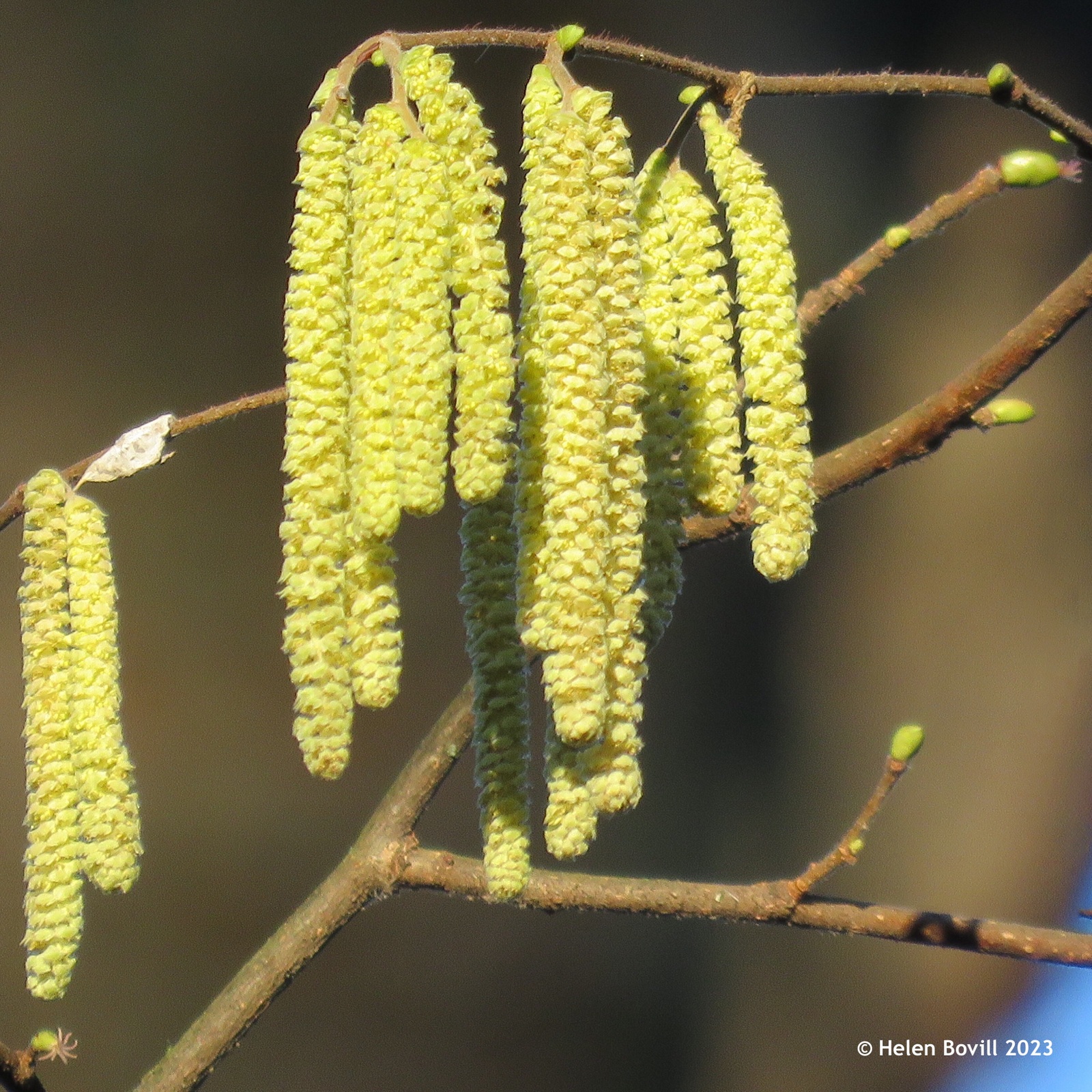
The long catkins on this Hazel are male. But Hazel also contains female catkins on the same tree, although the tree cannot pollinate itself. Look closely at the bottom left corner of the photo and also near the top right and you can see the female flowers. They’re just a few red tendrils at the end of a tiny bud.
There are still some berries to sustain the cemetery wildlife, including the ones on this bush, a variety of Skimmia. It looks like some have already been eaten. There are still some berries on the Holly, and the berries are now starting to form on the Ivy although they’re still green. I didn’t find any ripe black ones but I noticed the birds, especially Wood Pigeons, looking for them.
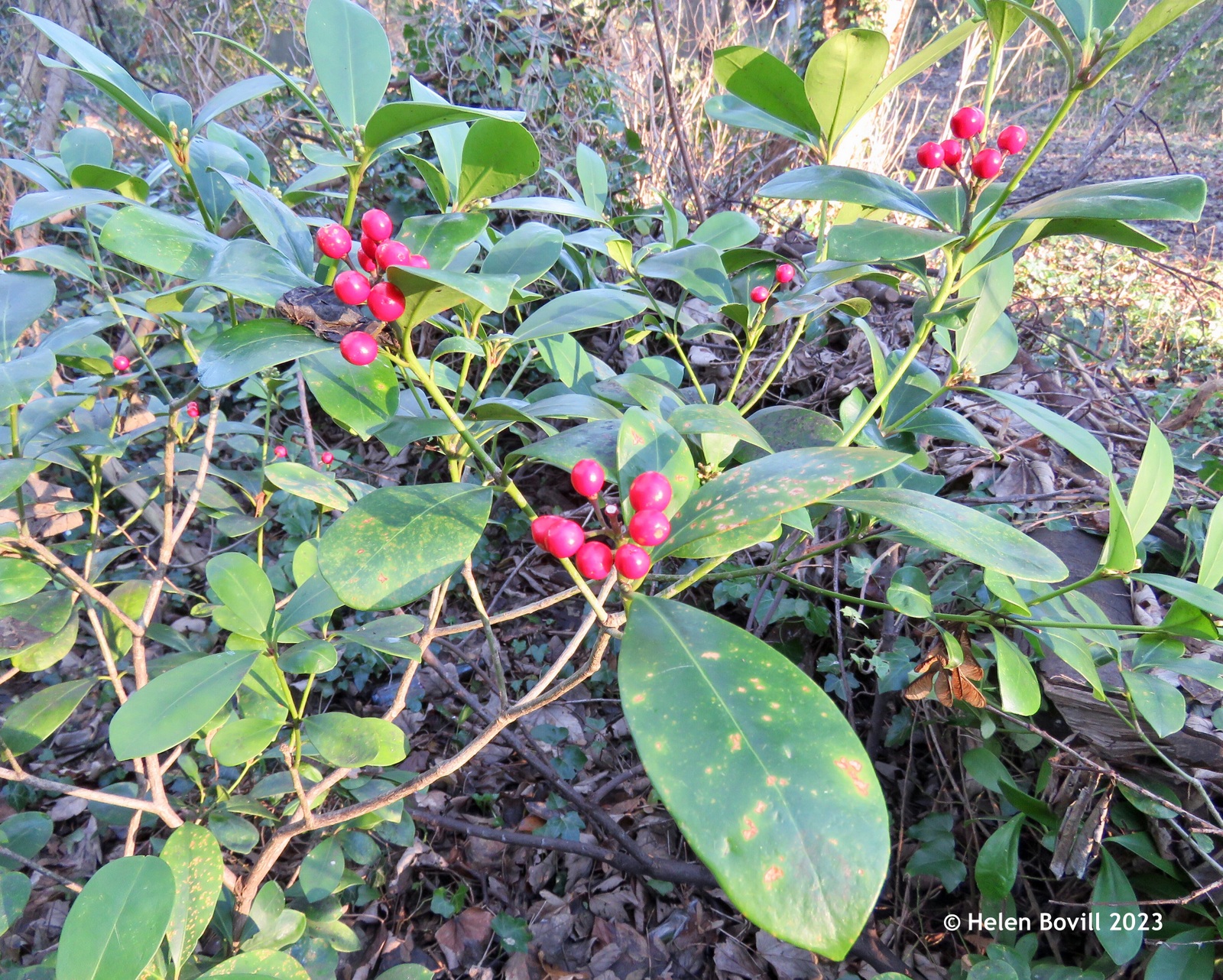
I didn’t find any ripe brambles but the leaves look great when covered in frost!
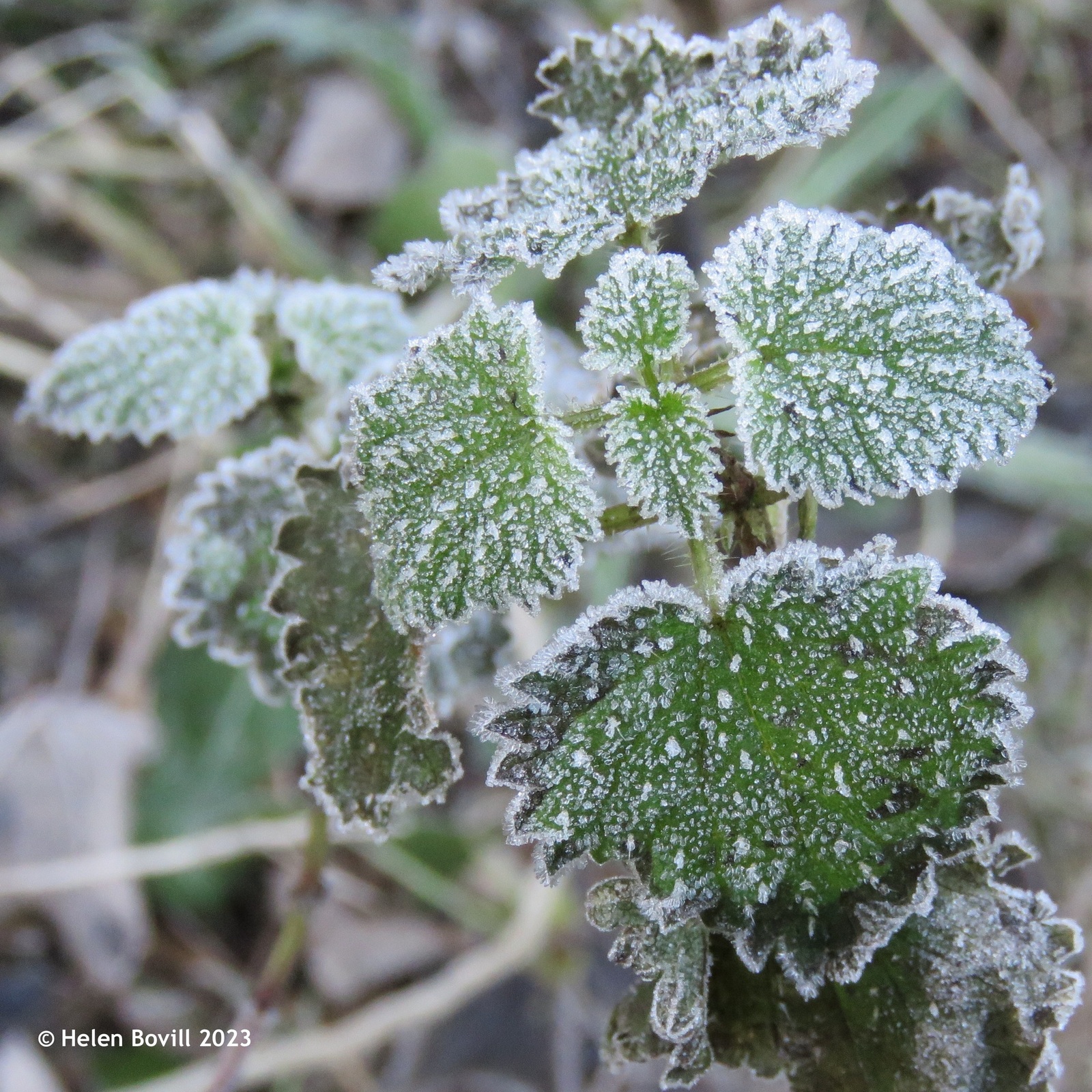
Fungi
I’ve seen various types of fungi in the cemetery this month. Even in the depths of winter they manage to survive, especially these Velvet Shank that can withstand being frozen solid. The cemetery wildlife must have had difficulty eating them in that state, although they did still show some signs of having been pecked or nibbled.
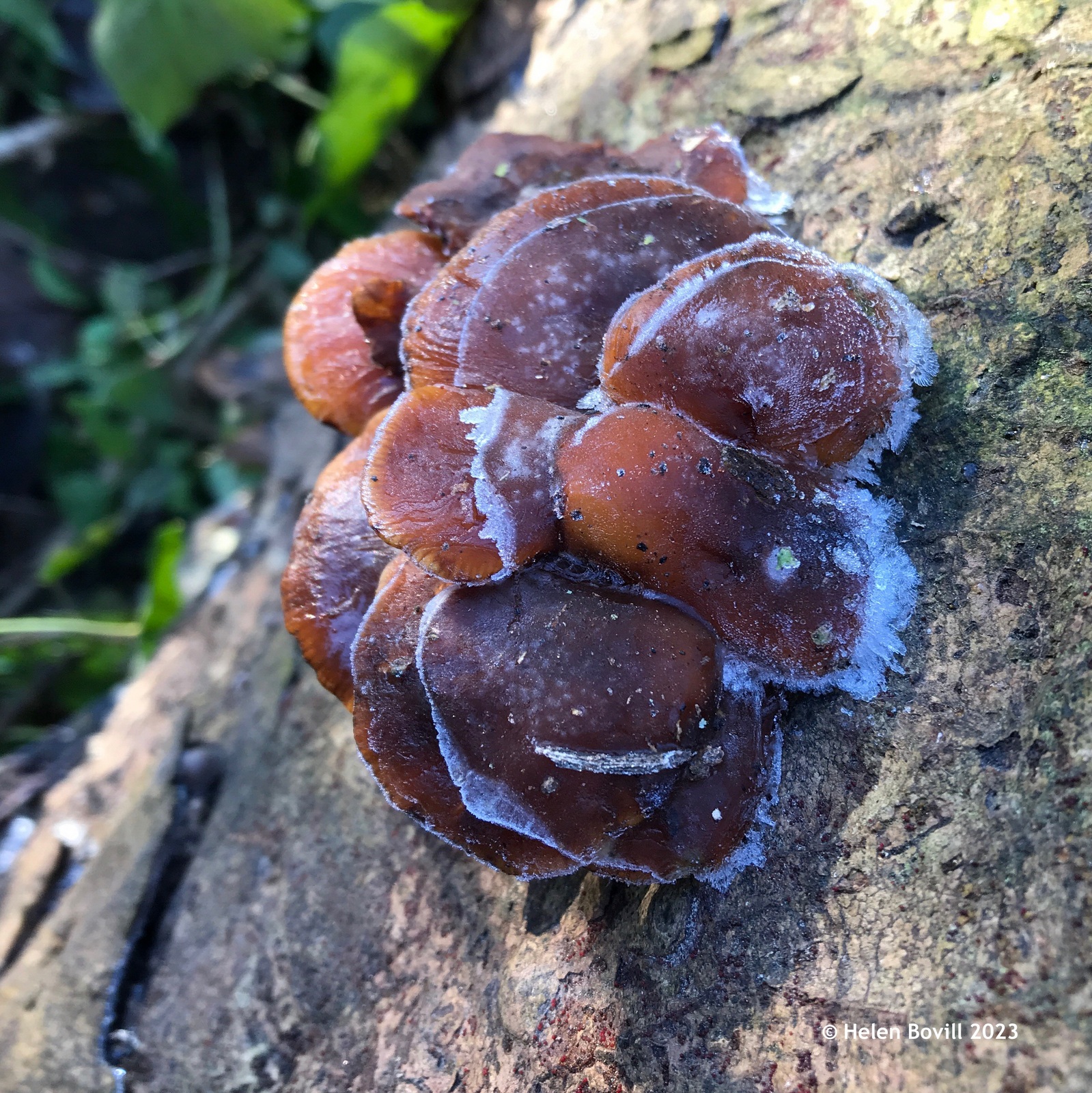
And look at the thick layer of ice on top of this large, tough bracket fungus, making it difficult to say what species it is.
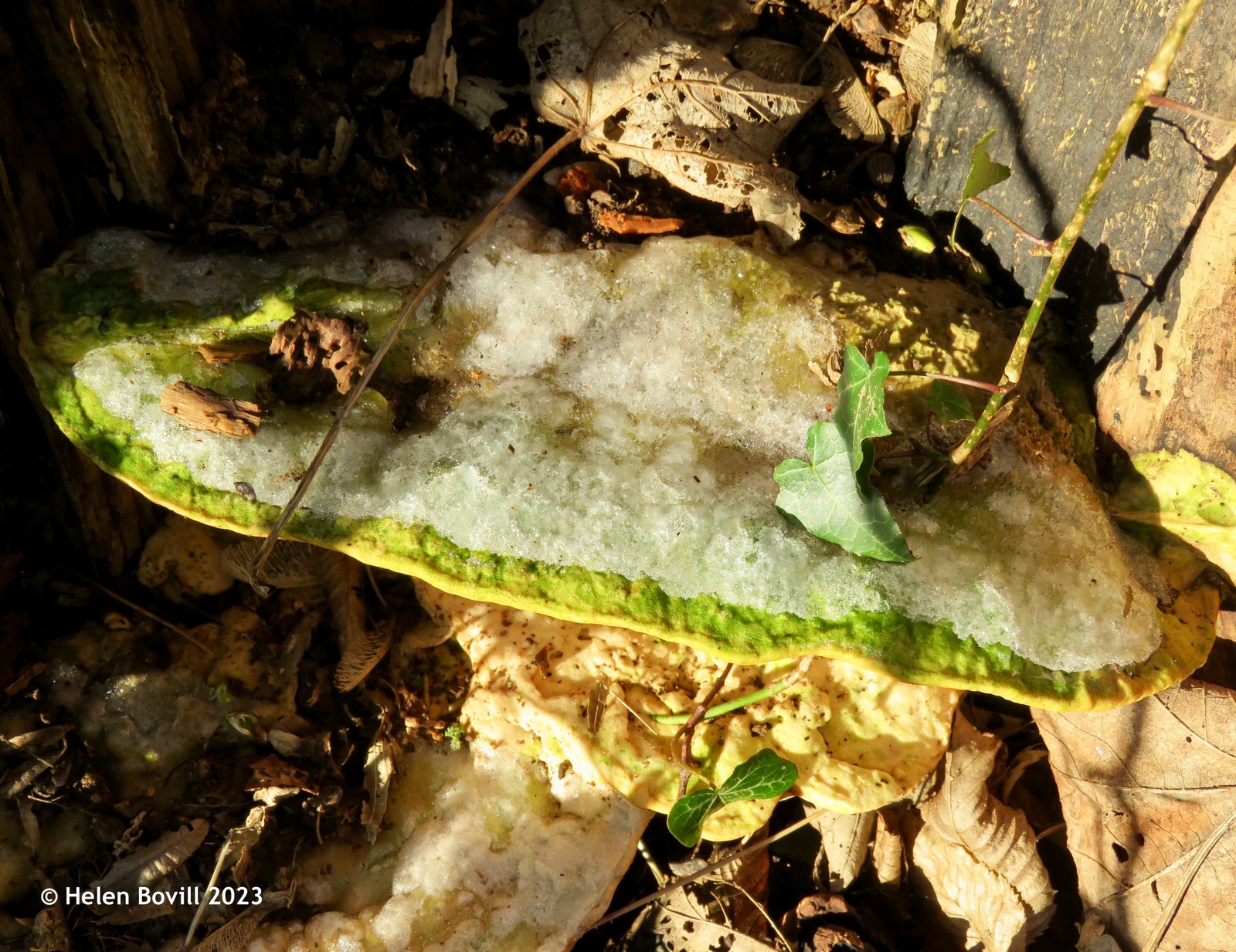
I also saw some Candlesnuff Fungus growing around an old tree stump. It’s also known as Stag’s Horn Fungus.

Mammals
The cold weather hasn’t stopped the Squirrels from being as active as they always are. I haven’t seen any foxes but I’ve heard them whilst walking past the cemetery late at night. The females make a plaintive cry, especially at this time of year as it’s their mating season.
Conclusion
It’s been a quiet month for the cemetery wildlife but the birds are thriving. This is probably because the cemetery adjoins several houses, and some of them probably have some well-stocked feeders in their gardens. But I have seen a few tiny insects in the air which is good news for the insectivores! And although most of you will be reading this after the RSPB’s Big Garden Birdwatch (27, 28 and 29 January) has finished you still have until 19 February to submit your results online. The link with more information is shown below. I hope you had an enjoyable hour watching the birds in your gardens!

Link to the RSPB website:-
Big Garden Birdwatch | The RSPB


